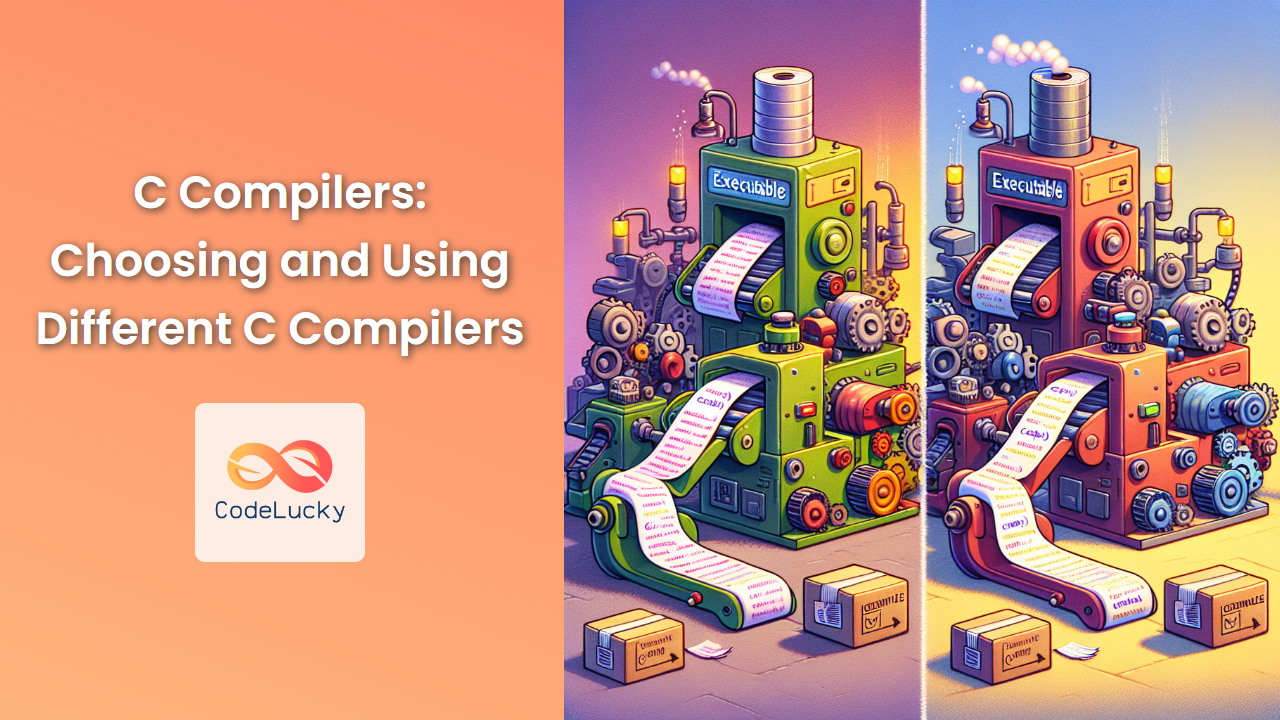In the world of C programming, clarity and readability are paramount. As your programs grow in complexity, you might find yourself working with intricate data types that can clutter your code and make it harder to understand. This is where the typedef keyword comes to the rescue! 🦸♂️
typedef is a powerful feature in C that allows you to create aliases for existing data types. By using typedef, you can simplify complex declarations, improve code readability, and make your programs more maintainable. In this comprehensive guide, we'll dive deep into the world of typedef, exploring its syntax, use cases, and best practices.
Understanding typedef
The typedef keyword in C is used to create a new name (alias) for an existing data type. Its basic syntax is:
typedef existing_data_type new_type_name;
Let's break this down with a simple example:
typedef unsigned long int uint32;
In this case, we've created a new type name uint32 that represents an unsigned long int. Now, whenever we need to use an unsigned 32-bit integer in our code, we can simply use uint32 instead of the longer unsigned long int.
Simplifying Complex Declarations
One of the most powerful applications of typedef is in simplifying complex declarations. Let's look at a scenario where this can be particularly useful.
Imagine you're working on a program that deals with coordinates in a 3D space. Without typedef, your code might look like this:
#include <stdio.h>
int main() {
float x, y, z;
printf("Enter x, y, and z coordinates: ");
scanf("%f %f %f", &x, &y, &z);
printf("The point is at (%f, %f, %f)\n", x, y, z);
return 0;
}
While this works, it doesn't clearly convey that these three floats represent a 3D point. Let's improve this using typedef:
#include <stdio.h>
typedef struct {
float x;
float y;
float z;
} Point3D;
int main() {
Point3D point;
printf("Enter x, y, and z coordinates: ");
scanf("%f %f %f", &point.x, &point.y, &point.z);
printf("The point is at (%f, %f, %f)\n", point.x, point.y, point.z);
return 0;
}
In this improved version, we've used typedef to create a new type Point3D that represents a point in 3D space. This makes our code more self-explanatory and easier to understand at a glance.
Enhancing Code Portability
typedef can also be used to enhance code portability. Different systems might have different sizes for basic data types. By using typedef, you can create platform-independent type definitions.
Here's an example:
#include <stdio.h>
#ifdef _WIN32
typedef unsigned long ULONG;
#else
typedef unsigned int ULONG;
#endif
int main() {
ULONG big_number = 4294967295UL;
printf("The value of big_number is: %lu\n", big_number);
return 0;
}
In this code, we've used conditional compilation to define ULONG differently based on the platform. On Windows systems, it's defined as unsigned long, while on other systems, it's defined as unsigned int. This allows our code to work correctly across different platforms without modification.
Creating Aliases for Function Pointers
One of the most powerful (and sometimes confusing) applications of typedef is in creating aliases for function pointers. Function pointers can have complex syntax, but typedef can make them much more manageable.
Let's look at an example where we create a function pointer type for mathematical operations:
#include <stdio.h>
typedef int (*MathOperation)(int, int);
int add(int a, int b) { return a + b; }
int subtract(int a, int b) { return a - b; }
int multiply(int a, int b) { return a * b; }
int divide(int a, int b) { return b != 0 ? a / b : 0; }
int perform_operation(int x, int y, MathOperation operation) {
return operation(x, y);
}
int main() {
int a = 10, b = 5;
printf("Addition: %d\n", perform_operation(a, b, add));
printf("Subtraction: %d\n", perform_operation(a, b, subtract));
printf("Multiplication: %d\n", perform_operation(a, b, multiply));
printf("Division: %d\n", perform_operation(a, b, divide));
return 0;
}
In this example, we've used typedef to create a new type MathOperation that represents a function taking two integers and returning an integer. This makes our perform_operation function much cleaner and easier to understand.
The output of this program would be:
Addition: 15
Subtraction: 5
Multiplication: 50
Division: 2
Improving Readability with Array Typedefs
When working with arrays, especially multidimensional ones, typedef can significantly improve code readability. Let's look at an example involving a chess board:
#include <stdio.h>
typedef char ChessBoard[8][8];
void initialize_board(ChessBoard board) {
for (int i = 0; i < 8; i++) {
for (int j = 0; j < 8; j++) {
board[i][j] = '-';
}
}
// Place some pieces
board[0][0] = 'R'; // Rook
board[0][1] = 'N'; // Knight
board[0][2] = 'B'; // Bishop
// ... more piece placements ...
}
void print_board(ChessBoard board) {
for (int i = 0; i < 8; i++) {
for (int j = 0; j < 8; j++) {
printf("%c ", board[i][j]);
}
printf("\n");
}
}
int main() {
ChessBoard my_board;
initialize_board(my_board);
print_board(my_board);
return 0;
}
In this example, we've used typedef to create a ChessBoard type, which is an 8×8 array of characters. This makes our function declarations much clearer and conveys the intent of the code more effectively.
The output might look something like this (partially shown):
R N B - - - - -
- - - - - - - -
- - - - - - - -
- - - - - - - -
...
Nested Typedefs
typedef can also be nested to create more complex type definitions. This can be particularly useful when working with data structures. Let's look at an example involving a linked list of students:
#include <stdio.h>
#include <stdlib.h>
#include <string.h>
typedef struct {
char name[50];
int age;
float gpa;
} Student;
typedef struct Node {
Student data;
struct Node* next;
} Node;
typedef Node* StudentList;
void add_student(StudentList* list, Student student) {
Node* new_node = (Node*)malloc(sizeof(Node));
new_node->data = student;
new_node->next = *list;
*list = new_node;
}
void print_students(StudentList list) {
while (list != NULL) {
printf("Name: %s, Age: %d, GPA: %.2f\n",
list->data.name, list->data.age, list->data.gpa);
list = list->next;
}
}
int main() {
StudentList my_class = NULL;
Student s1 = {"Alice", 20, 3.8};
Student s2 = {"Bob", 22, 3.5};
Student s3 = {"Charlie", 21, 3.9};
add_student(&my_class, s1);
add_student(&my_class, s2);
add_student(&my_class, s3);
print_students(my_class);
return 0;
}
In this example, we've used nested typedefs to create a linked list of students. We first define a Student struct, then a Node struct that contains a Student and a pointer to the next Node. Finally, we define StudentList as a pointer to a Node.
This nested structure allows us to work with a list of students in a very intuitive way. The output of this program would be:
Name: Charlie, Age: 21, GPA: 3.90
Name: Bob, Age: 22, GPA: 3.50
Name: Alice, Age: 20, GPA: 3.80
Best Practices and Considerations
While typedef is a powerful tool, it's important to use it judiciously. Here are some best practices to keep in mind:
-
Meaningful Names: Choose clear, descriptive names for your type aliases. For example,
uint32is more meaningful than justu. -
Consistency: If you're using
typedefto create aliases for basic types, be consistent throughout your codebase. -
Documentation: When creating complex type aliases, especially for function pointers, include comments explaining their purpose and usage.
-
Avoid Overuse: While
typedefcan improve readability, overusing it can have the opposite effect. Use it when it genuinely simplifies your code. -
Platform Considerations: When using
typedeffor portability, be aware of potential differences in type sizes across platforms.
Conclusion
The typedef keyword in C is a powerful tool for creating more readable, maintainable, and portable code. By allowing you to create aliases for existing types, it can simplify complex declarations, improve code clarity, and make your programs easier to understand and modify.
From basic type aliases to complex function pointer definitions, typedef offers a wide range of applications in C programming. By mastering this feature, you'll be able to write cleaner, more expressive code that's easier for both you and other developers to work with.
Remember, the goal of using typedef is to make your code more understandable and manageable. Use it wisely, and you'll find that it becomes an invaluable tool in your C programming toolkit. Happy coding! 🚀👨💻👩💻



















